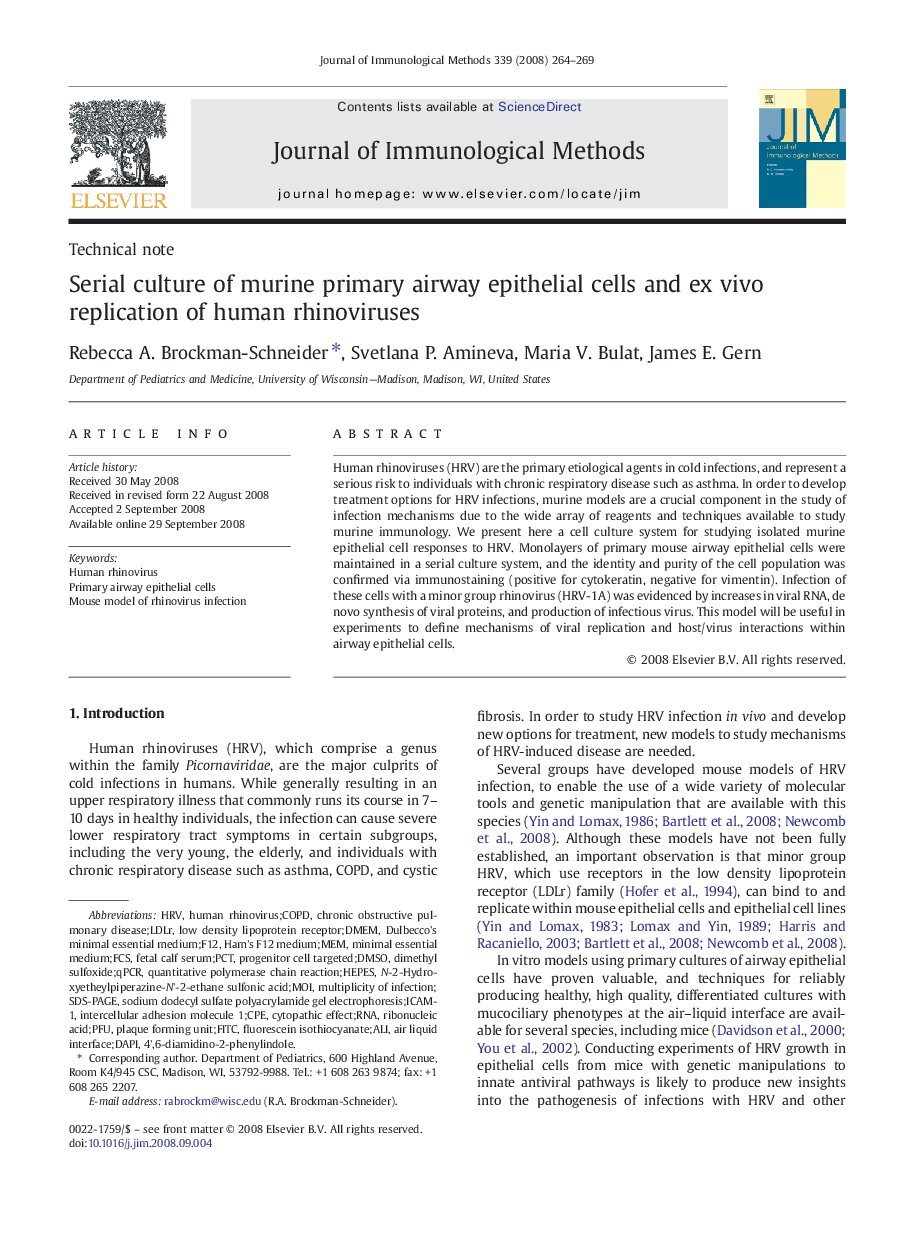| Article ID | Journal | Published Year | Pages | File Type |
|---|---|---|---|---|
| 10889359 | Journal of Immunological Methods | 2008 | 6 Pages |
Abstract
Human rhinoviruses (HRV) are the primary etiological agents in cold infections, and represent a serious risk to individuals with chronic respiratory disease such as asthma. In order to develop treatment options for HRV infections, murine models are a crucial component in the study of infection mechanisms due to the wide array of reagents and techniques available to study murine immunology. We present here a cell culture system for studying isolated murine epithelial cell responses to HRV. Monolayers of primary mouse airway epithelial cells were maintained in a serial culture system, and the identity and purity of the cell population was confirmed via immunostaining (positive for cytokeratin, negative for vimentin). Infection of these cells with a minor group rhinovirus (HRV-1A) was evidenced by increases in viral RNA, de novo synthesis of viral proteins, and production of infectious virus. This model will be useful in experiments to define mechanisms of viral replication and host/virus interactions within airway epithelial cells.
Keywords
qPCRPCTFCSDAPILDLRICAM-1F12HEPESDMEMCPEFITC4',6-diamidino-2-phenylindoleDMSOHRVMOICytopathic effectRNAribonucleic acidSDS-PAGESodium dodecyl sulfate polyacrylamide gel electrophoresisAliCOPDChronic obstructive pulmonary diseaseminimal essential mediumDulbecco's minimal essential mediumDimethyl sulfoxideair liquid interfaceHuman rhinovirusfetal calf serumfluorescein isothiocyanateMEMIntercellular adhesion molecule 1plaque forming unitquantitative polymerase chain reactionpfumultiplicity of infectionlow density lipoprotein receptor
Related Topics
Life Sciences
Biochemistry, Genetics and Molecular Biology
Biotechnology
Authors
Rebecca A. Brockman-Schneider, Svetlana P. Amineva, Maria V. Bulat, James E. Gern,
